5 perfect exercise pairings: what to do alongside running, HIIT and more
Love a certain type of exercise? Maximize your performance with these complementary workouts!
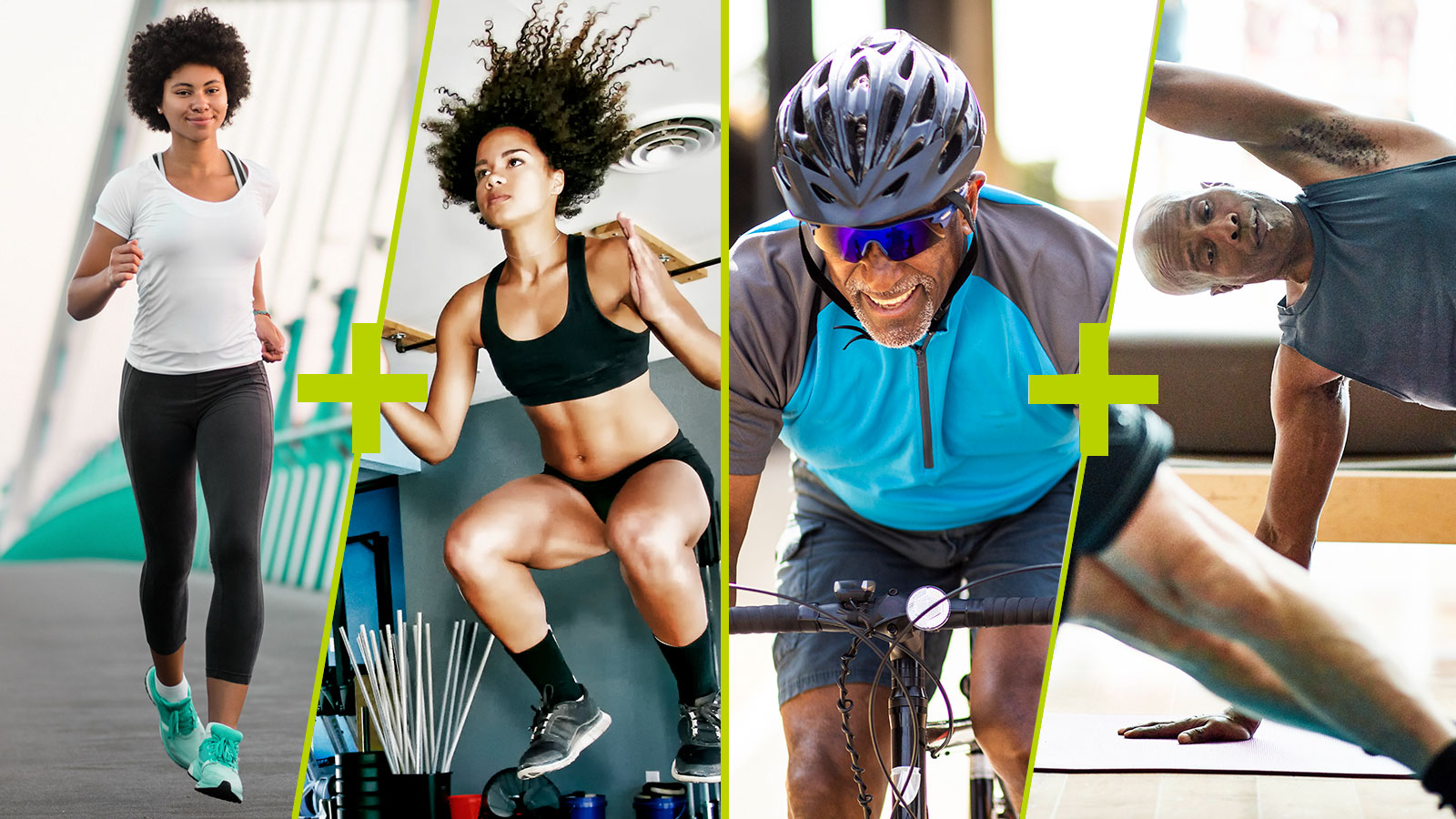
Fanatical about one form of exercise? Adding another workout into the mix could round out your workout regime and improve your performance. Try one of these perfect pairings.
Love running? Take up plyometrics

‘Around 99% of people I see run have poor running form – running in a ‘seated position’, sitting back and dragging their feet,’ says Brian Walpole, former Director of Personal Training at Workshop Gymnasium.
‘By contrast, professional runners look like they’re on springs – running in an upright position, lifting off with every stride. Each time they hit the ground their tendons and ligaments store energy, which propels them back into the air, meaning they don’t use as much energy from muscles, so don’t get tired as quickly.
'Plyometric training (the technical term for jumping exercises) helps build strong, ‘springy’ tendons and ligaments. I think it’s madness for any runner not to do it!’
How much should I do?
Brian suggests doing a 15-minute session three-four times a week, alongside your running routine. You could easily add it on at the start or end of your runs to kill two birds with one stone.
Must-do move: the jump squat
Start your week with achievable workout ideas, health tips and wellbeing advice in your inbox.
Squat jumps will help strengthen your glutes and legs to increase running power. Start in a squat, jump explosively into the air, land, squat back down and repeat. Do 4 x 10 reps, suggests Brian. For a more detailed guide on how to do this move, see our dedicated how to do squats article.
Love HIIT? Take up yoga
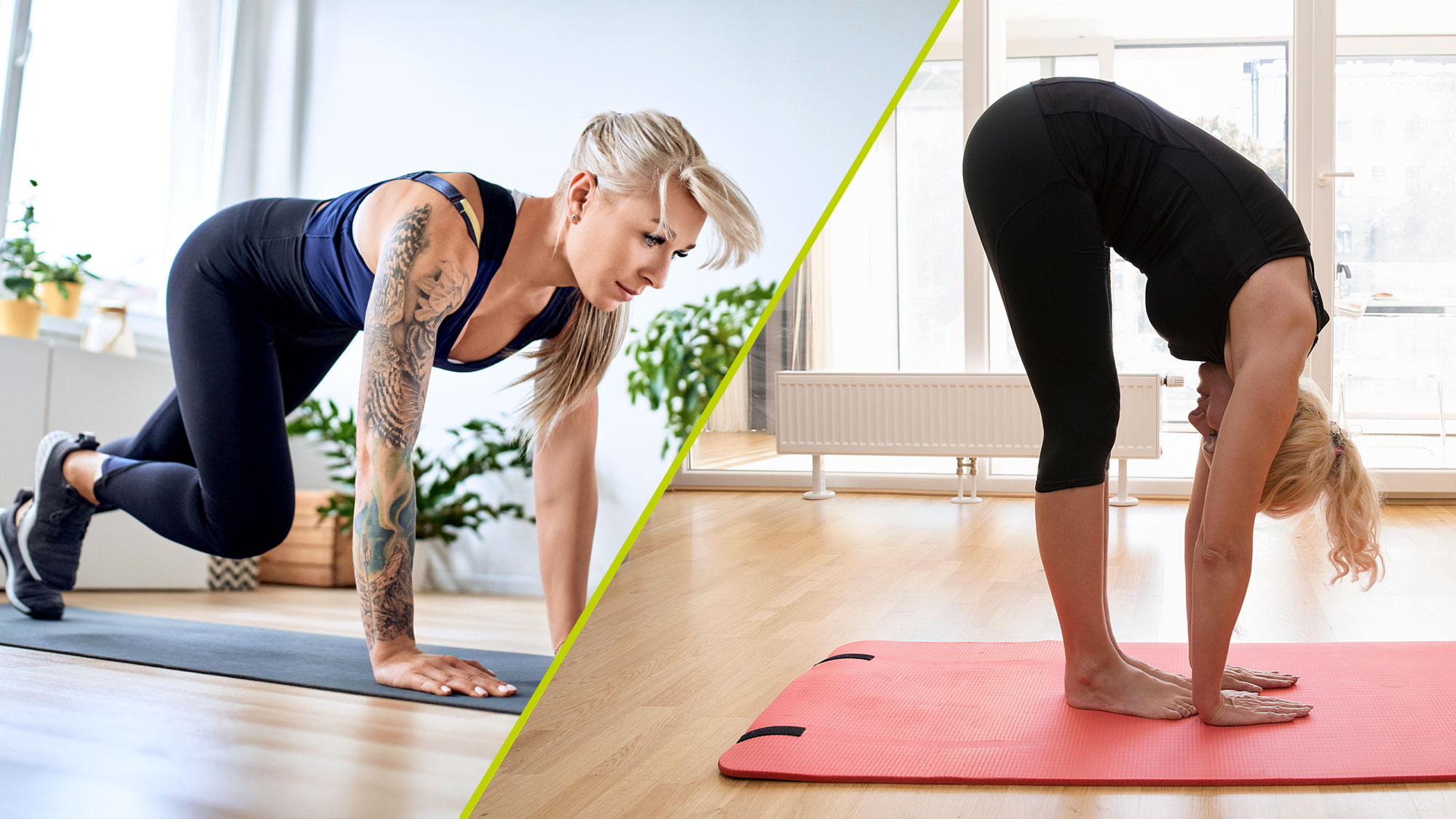
If HIIT workouts are your thing, yoga can be beneficial in helping to avoid the injuries often associated with high-impact exercise.
‘High-intensity interval training classes involve loads of fast reps with usually little emphasis on good form,’ notes personal trainer Si Tate. ‘By becoming more aware of alignment through yoga, it can feed back into your HIIT classes, reducing injury risk. Yoga also eases muscles tight from intensive training and offers relaxation.’
How much yoga should I do?
Si suggests adding two 45-minute classes or one 90-minute one into your workout routine each week. Look for local classes where the instructor will correct your positioning if needed. Alternatively, there are plenty of good free yoga videos available online. Either way, in these Covid-struck times it's a good idea to invest in your own mat - we've picked the best yoga mats to help you find the right one for you.
Must-do move: Warrior 2 with Eagle Arms
‘This offers the perfect recovery from HIIT, lengthening tight hips, shoulders and upper back,’ says David Kam, yoga instructor and Lululemon ambassador.
To do it, stride forward with your right foot, toes pointing forward. Turn your left foot to a 45° angle, heels roughly aligned. Bend front knee to a 90° angle, back leg straight. Turn your torso to face the left wall. Put your arms out straight in front, then cross them over, right under left. Bend at the elbow and wrap your forearms around each other, placing your palms together in a prayer position. Keep forearms pointing straight up, lifting your elbows. Hold for 3-6 breaths, then repeat on the other side.
For complete yoga routines, see our list of three 15-minute yoga routines, plus our articles on yoga for anxiety and yoga for the over 50s.
Love cycling? Take up Pilates
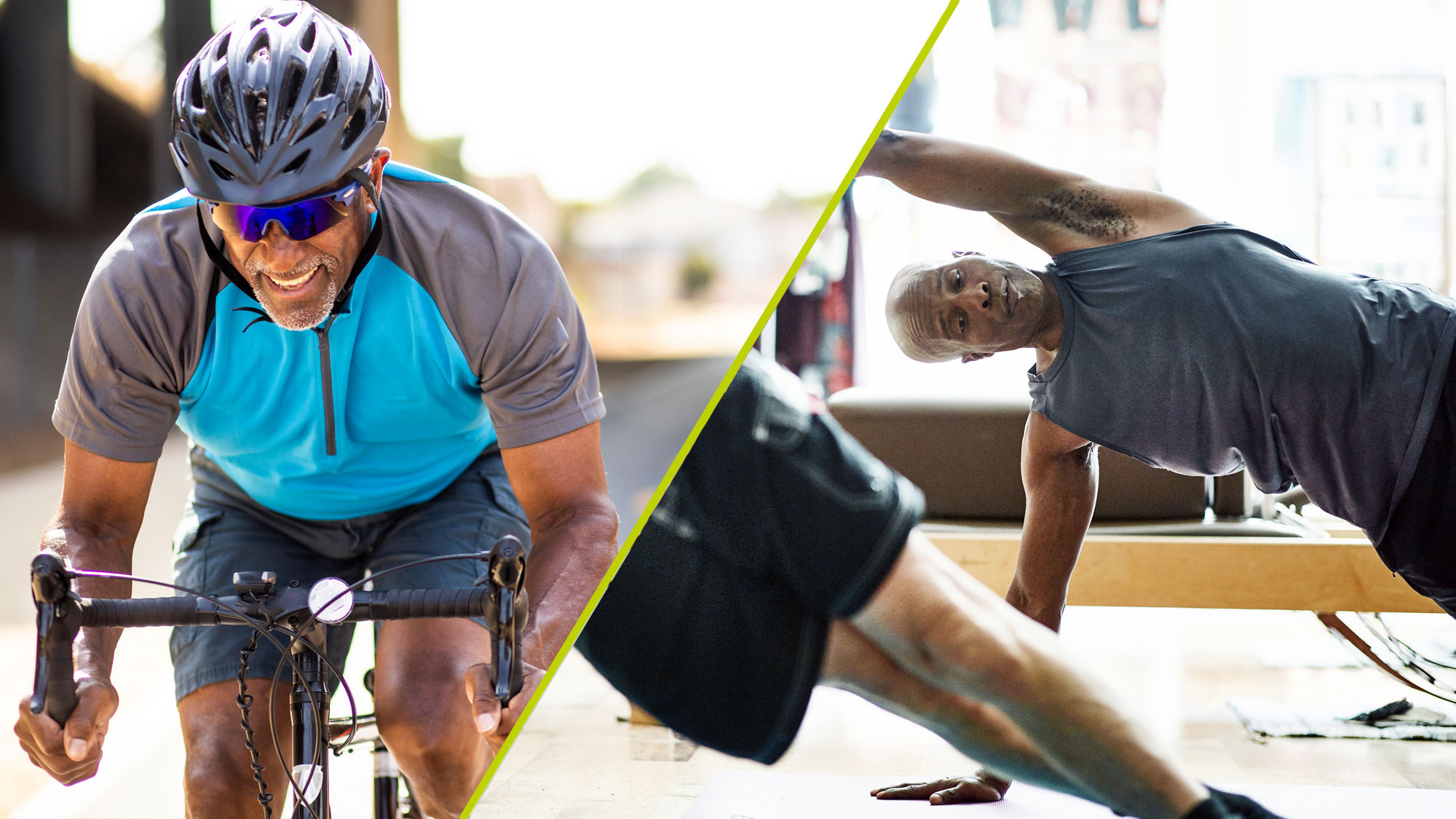
‘Cyclists often have poor posture on the bike, causing tension in their backs, which Pilates can improve,' Brian explains.
'You also need a strong core to really power through your legs when cycling, central to Pilates.
‘Finally, Pilates educates you on how to engage the right muscles – important as cyclists tend to underuse their hamstrings and glutes, risking injury.’
How much Pilates should I do?
Brian suggests trying two sessions a week to start with - although, once you start seeing the results in your core, prepare to become addicted and find yourself squeezing in more!
Must-do move: Upper Back Extension
This classic Pilates move will help to ease aches and pains caused by hunching over your bike. Gede Foster, Pilates instructor Master Trainer at Frame, explains how to do it:
'Lie down on your front, feet shoulder-width apart. Relax your glutes,and draw your tummy button to your spine, arms by your side and forehead on the floor. Roll your shoulders back and down and keep the back of the neck in-line with the spine. Reach your breastbone forward as you extend up, squeezing shoulder blades together. Aim for 15-30 reps, holding for a count of three at the top.'
Love swimming? Take up resistance training
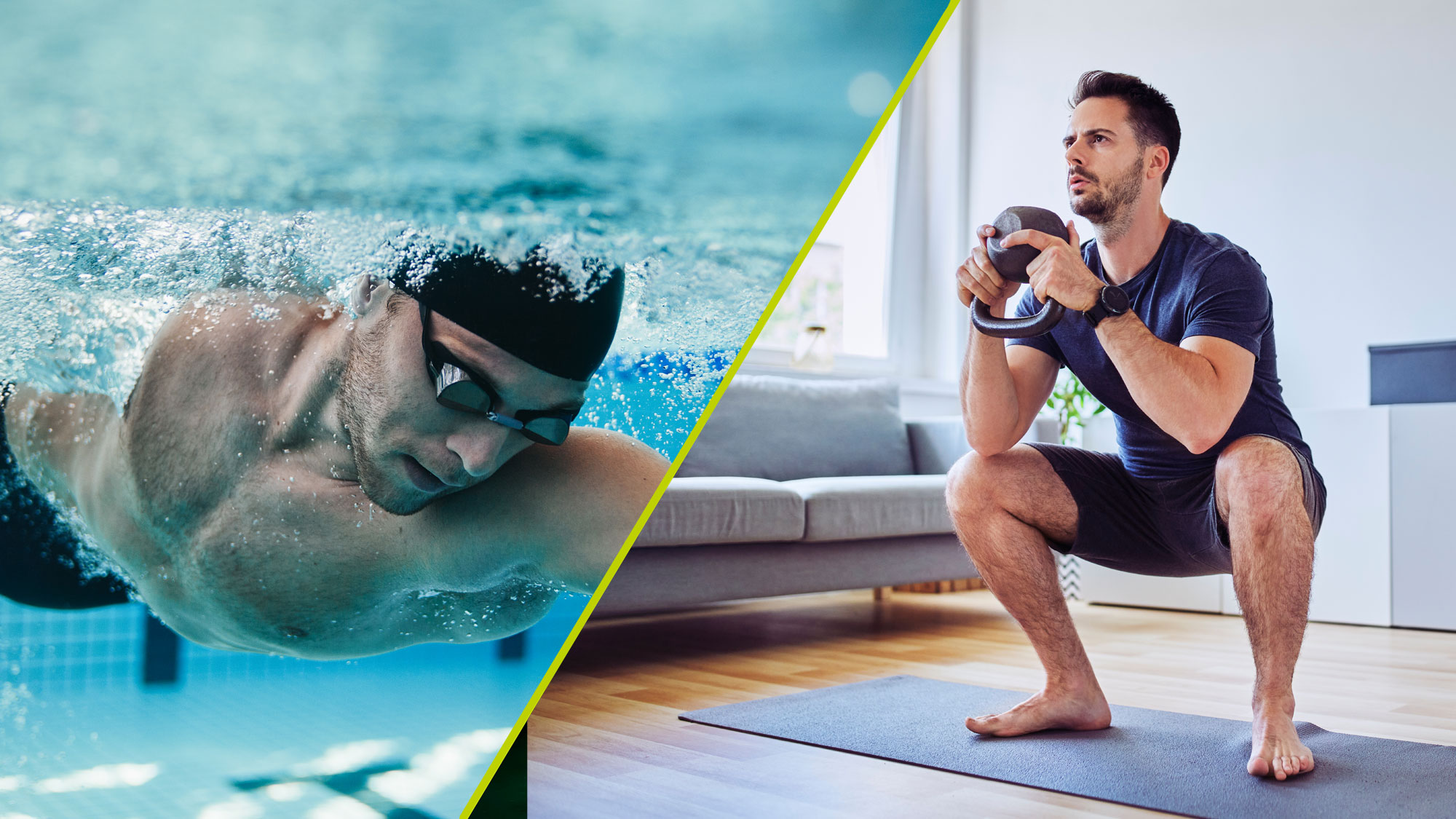
Swimming is a brilliant low-impact pursuit, but if you want to increase your lap times then you need to increase your strength - and resistance (or weight) training is a great way to do this.
‘Swimming relies heavily on your lats (the muscles in the middle of your back), core and leg muscles, but because water offers fixed resistance, it’s hard to keep building strength from swimming alone,' explains Brian.
How much resistance training should I do?
Aim for three strength sessions a week focusing on these areas, suggests Brian. If you're working out at home, you'll need some key pieces of strength training kit. We've picked the cream of the crop in our expert buying guides to the best adjustable dumbbells, the best kettlebells and the best resistance bands.
Must-do move: Medicine Ball Throws
‘Rotation is central to front crawl, so include rotation exercises to build strength,’ says Brian.
To do them, stand in a staggered stance with your right foot back, holding a medicine ball by your right hip. Throw it underarm to a partner, standing in the same position opposite. Do 6-8 throws on each side and repeat 3-4 times.
Love hiking? Take up boxing
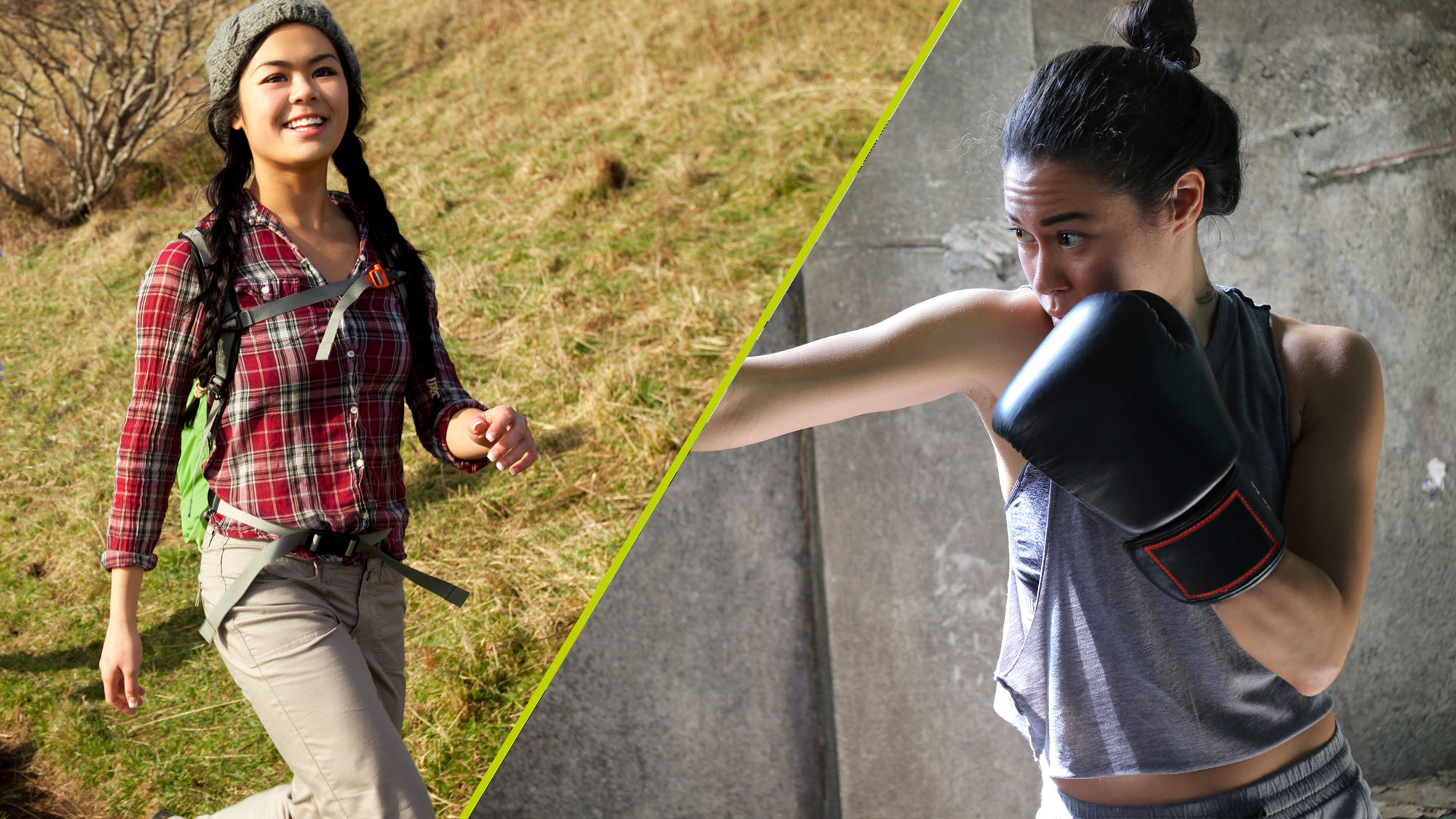
If you love nothing more than a good hike, it's not just your best walking shoes you should be lacing up - it's a pair of boxing gloves, too!
Hiking and boxing might seem like completely different activities, but they actually complement one another nicely.
Si explains why: ‘Hiking mostly works your lower body, so boxing complements it by focusing on your top half.
'Hiking is also an aerobic activity (building endurance), whereas boxing tends to be more intensive, tapping into your anaerobic system – creating the ‘after-burn’ effect where you continue to torch calories post-workout. Doing both is good for all-round wellbeing.'
How much boxing should I do?
If you usually hike at the weekend, Si suggests adding in a couple of boxing classes mid-week.
Must-do move: Three-Punch Drill
‘To build upper body strength and fitness, do 20 straight jabs, 20 uppercuts, and 20 hooks against pads,’ says Si. ‘Aim to repeat five times with a 15-second rest between sets.’
Launched in 2020, Fit&Well.com is all about helping you meet your health and fitness goals in ways that are fun and achievable. With news and features on fitness, weight loss, running, nutrition, yoga, wellness and more, we're committed to helping you wherever you are on your fitness journey. We break down the best fitness tech, with reviews, buying guides and the latest deals on fitness and wellness kit, from dumbbells to diffusers.
We cater for all difficulty levels here. It doesn't matter if you're a beginner in the world of fitness or you're gearing up for your tenth marathon: we're all moving towards the same goal – creating a healthier, happier you. From guides on getting started doing walks around the block, to creating the perfect work-from-home space, to eating to fuel your first triathlon. It's all here.

